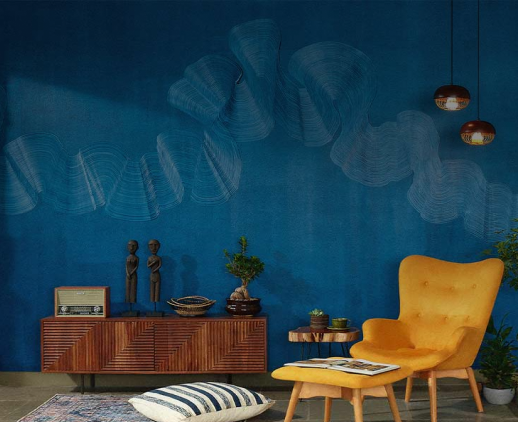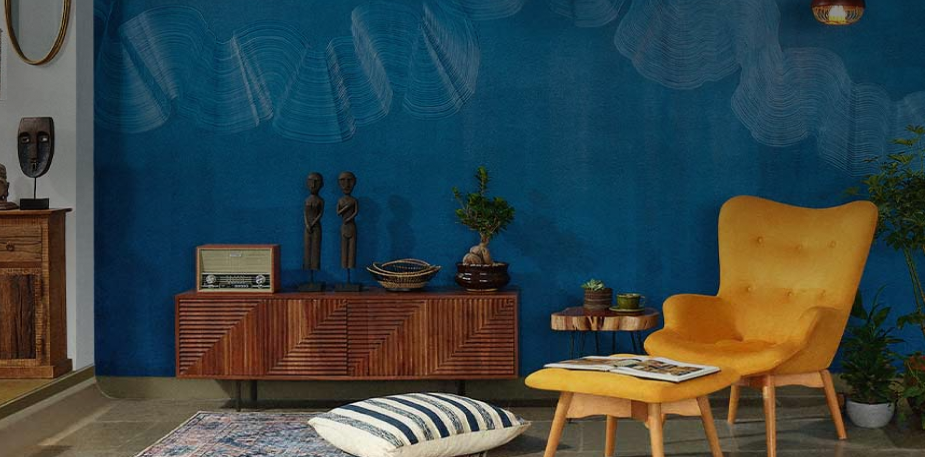Get your home interior design budget estimate
A home in Surat, designed to be relevant and elegant for generations

Kalpak Shah of Studio Course built on his clients' love for Modernist design and the restrictive shape of their house plot to create a warm and unique home
A well-designed house is a reflection of the people who live within it. Kalpak Shah, Principal Architect of Studio Course, Pune, ensured his style didn't subsume his client's when he designed T-house, on the outskirts of Surat. Though it is part of a suburban community development, this house in particular stands out from among the 15 other bungalows around it. The 5,000 sq.ft. plot is blessed with ample natural light and lots of trees surrounding it. What makes it unique though is the restrained simple interior design that feels like Modern Revivalist design, marked by the features that were first introduced in this country by Le Corbusier in Chandigarh.
The Brief
The home is tailor-made to suit the client's lifestyle and preferences. Their brief was simple, open-ended enough for possible additions and alterations in the future. Homes usually outlive the people who build them, living on through generations with different tastes and inclinations. In this case the clients were very aware of that, and wanted to consider that within their design choices. Modernist design, particularly elements that mark mid-century modernism, is classic, in that it always remains relevant to Indian conditions and tastes. When it is treated with a minimalist's hand, then the result is simple, practical and elegant.

Wood, the dominant element, has been used extensively throughout the house and adds warmth to the space.
The Structure
The name T-House came from the T-shaped layout of the plot. Instead of thinking of it as a restriction, the team took the parameters on as inspiration. All the circulation zones and passages form the centre of the house and the living spaces surround it. This way the whole house opens up to a lot of natural light and ventilation.

The dining room features a beautiful wooden set up, paired with metallic lamps.

The staircase leads to the upper level of the house, which has the private spaces of the residents.
The Materials
The materials involved are key contributors to the look of the space. Wood, the dominant element, has been used extensively throughout the house. The warmth of the brown tones have been juxtaposed with a neutral colour palette. The walls for example, are painted in light grey and have a concrete finish achieved by Asian Paints Stucco Marmelano, while the floors are black granite. The grey is the perfect partner to the warmth of the wood in the room; if Kalpak had used a cream or white, as people often do, the contrast would have been distracting and unpleasant. Instead, the warm neutral colours work brilliantly with the vibrant artwork and lively installations. It also allows the clients to add, move and change things out as time goes by.
The Aesthetics
The mood-board of the house is heavily inspired by nature and so the colours and finishes align with that vision. The wooden finishes bring in the brown, while pops of green are attained with indoor plants in several corners. The walls and ceiling have a concrete finish giving a raw earthy feeling throughout the house. The washrooms on the other hand have white marble walls with very light grey kota stone floors, to respect the smaller volume of those spaces. The little details play important roles in the design language of this project. The height of the skirting in particular, which is higher than the norm, gives solidity to the space.
The Furniture
Most of the furniture in the house was custom designed by the team at Studio Course. Skilled local craftsmanship played a pivotal role in successfully executing every detail. Hans Wegner, George Nakashima, and Pierre Jeanneret pieces were handpicked, some of which have been altered to suit Indian anthropometry. A celebration of modernism through and through.

Get Started with your interior design journey with us!
Speak to our design professionals
What’s the status of your home possession?
What’s the condition of your home/space?
Will you be living in your space during the renovation?
 Previous Question
Previous Question
Is your interior design budget over 4 lakhs?
 Previous Question
Previous Question
Book next available appointment slots with our experts!
Please Select Date and Day
 Previous Question
Previous Question

Something went wrong!
We were unable to receive your details. Please try submitting them again.

Appointment Scheduled!
Thank you for giving an opportunity to Asian Paints Beautiful Homes Service! Our Customer Experience Specialist will get in touch with you soon.
Appointment Date & time
Thank You!
Our team will contact you for further details.
What’s the status of your home possession?
What’s the condition of your home/space?
Will you be living in your space during the renovation ?
 Previous Question
Previous Question
Is your interior design budget over 4 lakhs?
 Previous Question
Previous Question
Book next available appointment slots with our experts!
DEC 2023
Please Select Date and Day
 Previous Question
Previous Question

Something went wrong!
We were unable to receive your details. Please try submitting them again.

Appointment Scheduled!
Thank you for giving an opportunity to Asian Paints Beautiful Homes Service! Our Customer Experience Specialist will get in touch with you soon.
Appointment Date & time
17 Oct 23, 03.00PM - 04.00PM














































